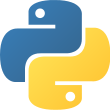 Language
Language
- Python 3
 Reading time
Reading time
- Approximately 26 days
 What you will learn
What you will learn
- Machine Learning and AI
 Author
Author
- Henrik Brink
 Published
Published
- 8 years, 9 months ago
 Packages you will be introduced to
Packages you will be introduced to
- scikit-learn
- pandas
- matplotlib
- numpy
- scipy
Summary
Real-World Machine Learning is a practical guide designed to teach working developers the art of ML project execution. Without overdosing you on academic theory and complex mathematics, it introduces the day-to-day practice of machine learning, preparing you to successfully build and deploy powerful ML systems.
Purchase of the print book includes a free eBook in PDF, Kindle, and ePub formats from Manning Publications.
About the Technology
Machine learning systems help you find valuable insights and patterns in data, which you'd never recognize with traditional methods. In the real world, ML techniques give you a way to identify trends, forecast behavior, and make fact-based recommendations. It's a hot and growing field, and up-to-speed ML developers are in demand.
About the Book
Real-World Machine Learning will teach you the concepts and techniques you need to be a successful machine learning practitioner without overdosing you on abstract theory and complex mathematics. By working through immediately relevant examples in Python, you'll build skills in data acquisition and modeling, classification, and regression. You'll also explore the most important tasks like model validation, optimization, scalability, and real-time streaming. When you're done, you'll be ready to successfully build, deploy, and maintain your own powerful ML systems.
What's Inside
- Predicting future behavior
- Performance evaluation and optimization
- Analyzing sentiment and making recommendations
About the Reader
No prior machine learning experience assumed. Readers should know Python.
About the Authors
Henrik Brink, Joseph Richards and Mark Fetherolf are experienced data scientists engaged in the daily practice of machine learning.
Table of Contents
- What is machine learning?
- Real-world data
- Modeling and prediction
- Model evaluation and optimization
- Basic feature engineering
- Example: NYC taxi data
- Advanced feature engineering
- Advanced NLP example: movie review sentiment
- Scaling machine-learning workflows
- Example: digital display advertising
THE MACHINE-LEARNING WORKFLOW
PRACTICAL APPLICATION
- Works/Worked at GE (General Electric)
